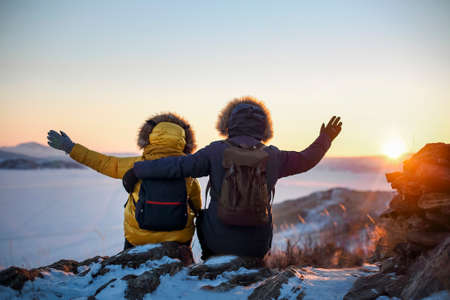Why Hiking with Kids Matters
Introducing your children to hiking is more than just a fun way to spend time together—it’s a meaningful investment in their growth and your family’s well-being. When you step onto a trail with your kids, you’re opening up a world of adventure that encourages curiosity, confidence, and connection. Hiking helps children build resilience as they overcome small challenges, like climbing over rocks or reaching the next scenic viewpoint. These experiences teach valuable life skills, from problem-solving to teamwork, all while surrounded by the beauty of nature. Beyond the physical benefits, hiking also fosters a deep appreciation for the outdoors and helps create lasting family memories that your kids will cherish for years to come. Whether you’re starting out on a short local path or planning bigger adventures in national parks, hiking can become a cherished family tradition—one that brings everyone closer and inspires a lifelong love for exploring the great outdoors.
2. Choosing Kid-Friendly Trails
Finding the perfect trail for your family hike is all about matching the trail’s difficulty and features with your children’s ages, interests, and experience levels. With so many options available across the U.S., it’s important to know what to look for and how to use reliable resources to make your choice easy and fun.
Start with Reputable Resources
To ensure a safe and enjoyable hike, start your search with trusted resources like AllTrails, which offers user reviews, photos, and filtering options for trail length and difficulty. The National Park Service (NPS) website also provides detailed descriptions of trails within national parks, highlighting family-friendly routes and amenities such as restrooms or visitor centers nearby.
Assessing Trail Suitability
When selecting a trail, pay attention to these key factors:
- Trail Length & Elevation Gain: Choose shorter, flatter trails for toddlers and preschoolers; older kids may enjoy longer or slightly more challenging hikes.
- Trail Surface: Look for well-maintained paths that are stroller-friendly or easy to walk on for little feet.
- Points of Interest: Trails with creeks, wildlife viewing areas, or interactive signage can keep kids engaged.
- Amenities: Access to bathrooms, water fountains, and shaded rest stops can make your outing much more comfortable.
Quick Comparison Table: Trail Features by Age Group
| Age Group | Recommended Trail Length | Elevation Gain | Amenities to Look For |
|---|---|---|---|
| Toddlers (2-4) | <1 mile | <100 ft | Stroller access, bathrooms, shade |
| Young Kids (5-8) | 1–2 miles | <250 ft | Ponds/creeks, picnic spots |
| Tweens (9-12) | 2–4 miles | <500 ft | Scenic views, interpretive signs |
| Teens (13+) | 4+ miles | <1000 ft | Diverse terrain, challenge options |
Making the Most of Your Search Tools
AllTrails lets you filter by “kid-friendly” or “easy” ratings and read recent reviews from local families. The NPS website often lists Junior Ranger programs or guided hikes that are perfect for first-time explorers. Don’t forget to check community forums or local hiking clubs—many parents share their own tips about hidden gems in your area. With a little research and the right filters, you’ll find trails that fit every age group and spark a love of adventure in your family.

3. What to Pack for a Successful Family Hike
When hiking with kids, packing thoughtfully is key to creating a safe, enjoyable, and memorable family adventure. Here are some practical tips for assembling your family’s hiking kit:
Snacks & Hydration
Kids burn a lot of energy on the trail! Bring plenty of healthy snacks like granola bars, fruit slices, trail mix, or string cheese. For hydration, pack enough water for everyone—lightweight water bottles or hydration packs are great options. Don’t forget a few extra snacks in case your hike takes longer than expected.
Appropriate Clothing
Dress in layers so everyone can easily adjust to changing weather. Choose moisture-wicking fabrics and avoid cotton, which can get soggy and uncomfortable. Sturdy shoes or boots with good traction are a must. For little hikers, pack an extra pair of socks and lightweight rain jackets just in case.
Sun Protection
Even on cloudy days, sun protection matters. Remember hats with brims, sunglasses for sensitive eyes, and kid-friendly sunscreen (SPF 30 or higher). Reapply sunscreen regularly, especially if your hike involves water play or sweaty activities.
Fun Extras for Kids
Keep little ones engaged by bringing along simple items like binoculars for birdwatching, a magnifying glass to examine leaves and bugs, or a small notebook for drawing what they see. Consider adding a basic first aid kit and insect repellent as well—these essentials help keep everyone comfortable and safe.
Final Checklist
Before you head out, double-check that you have everything packed: snacks, water, appropriate clothing layers, sun protection, first aid supplies, fun extras, and any personal items your kids may need (such as comfort objects or medication). With a bit of planning, you’ll be ready to make wonderful outdoor memories together!
4. Keeping Kids Engaged on the Trail
One of the best ways to create lasting family memories while hiking is to keep your kids actively engaged along the trail. Hiking isn’t just about reaching a destination; it’s about enjoying the journey together. Here are some creative, fun, and meaningful activities that can transform an ordinary hike into an adventure your children will look forward to every time.
Trail Games for All Ages
Games can make hiking feel less like exercise and more like playtime, especially for younger kids. Try classic games with an outdoor twist or invent your own. Here are a few ideas:
| Game Name | How to Play | Best For Ages |
|---|---|---|
| I Spy | Take turns spotting something interesting and giving clues until someone guesses what it is. | 3+ |
| Nature Bingo | Create bingo cards with items like pinecones, wildflowers, or animal tracks—see who can spot them first. | 4+ |
| 20 Questions: Nature Edition | Think of a plant or animal you might see on the trail; others ask yes/no questions to guess what it is. | 6+ |
| Follow the Leader | Switch leaders every so often and have each one pick a silly way to walk (e.g., giant steps, hopping). | 3+ |
Nature Scavenger Hunts
A scavenger hunt is a wonderful way to get kids observing their environment and learning about nature as they go. Before you head out, prepare a list of items for your child to find—think differently shaped leaves, a feather, smooth rocks, or signs of wildlife. You can also tailor your list based on the season or the region you’re exploring.
Sample Scavenger Hunt List
- A heart-shaped rock
- A red leaf
- A butterfly or bee
- An animal track or footprint
- A flower with more than five petals
- A bird’s song (have them listen quietly)
Outdoor Education: Learning on the Go
The trail is full of opportunities for informal learning. Turn moments of curiosity into teachable experiences—identify plants and animals using a field guide app, discuss how erosion shapes landscapes, or talk about why it’s important to stay on marked trails for conservation. Encourage questions, and let your child take the lead in discovering new things.
Tips for Making Outdoor Learning Fun:
- Praise curiosity and observation skills over having “right answers.”
- Bring along simple supplies like magnifying glasses or binoculars for close-up exploration.
- If you don’t know an answer, look it up together when you get home—modeling lifelong learning!
- Create nature journals where your child can draw or write about what they see.
By keeping hikes playful, interactive, and educational, you’ll help your kids develop a genuine love for the outdoors—and make every hike something special they’ll remember as part of your family tradition.
5. Safety Tips for Hiking with Children
When you’re hiking with kids, making safety a top priority helps everyone feel confident and prepared to enjoy the adventure. Here’s what families should keep in mind before heading out on the trail:
First Aid Essentials
Always bring a well-stocked first aid kit tailored for families. Include adhesive bandages, antiseptic wipes, tweezers (for splinters or ticks), child-safe insect repellent, sunscreen, and any necessary medications. Teach older kids basic first aid skills, like cleaning a scrape or applying a bandage, so they can help themselves and others if needed.
Trail Etiquette for Families
Show respect for nature and other hikers by staying on marked paths, packing out all trash, and keeping noise to a considerate level. Remind children not to pick plants or disturb wildlife. If you’re on a narrow trail, teach your family to step aside for uphill hikers and say a friendly “hello” as you pass others—this is the American way!
Staying Together: Strategies That Work
It’s easy for excited kids to dash ahead, so set clear rules about staying within sight or earshot of adults. Consider using a “lead hiker” system where an adult walks at the front and another brings up the rear, making sure no one lags behind. For larger groups or unfamiliar trails, bright clothing or matching bandanas can help keep everyone visible.
Managing Tricky Situations
If your family gets separated, agree on a simple plan: stop moving and stay put until reunited. Make sure each child knows your cell phone number (or has it written down), and consider giving older kids a whistle—three blasts is the universal distress signal. Be ready to turn back if weather changes quickly or if anyone feels tired; it’s always okay to cut a hike short for safety’s sake.
A Little Preparation Goes a Long Way
With thoughtful planning and open communication, hiking becomes not just safer but also more enjoyable for everyone involved. By modeling good safety habits, you’re empowering your kids—and building their confidence for many more outdoor adventures to come.
6. Making Hiking a Family Tradition
Turning hiking into a beloved family tradition is about more than just hitting the trails—its about building shared memories and rituals that last for years to come. Here are some thoughtful ways to make hiking an integral part of your familys story.
Create a Family Hiking Log
Start by dedicating a special journal or digital log to your hiking adventures. Let each family member jot down their favorite moments, draw pictures, or add photos from each trip. Over time, this log becomes a cherished keepsake filled with stories, accomplishments, and even a few funny mishaps to reminisce about together.
Join Local Hiking Groups
Connecting with other families through local hiking groups can add new energy and excitement to your outdoor adventures. Many U.S. communities have family-friendly hiking clubs that organize group hikes, educational events, and seasonal outings. These gatherings offer both kids and adults the chance to make new friends and learn more about local trails in a welcoming, supportive environment.
Celebrate Milestones Together
Recognize achievements big and small—whether it’s completing a first hike, reaching a scenic overlook, or mastering a longer trail. Consider celebrating with simple rituals like awarding homemade badges, enjoying a special treat at the end of the hike, or planning an annual “family hike day.” These milestones not only motivate kids but also give everyone something to look forward to as you continue exploring the great outdoors together.
Keep the Tradition Alive
The key to making hiking a lasting family tradition is consistency and joy. Involve everyone in planning new adventures, revisit favorite trails, and encourage each other along the way. As you build these habits, you’ll create not just fun outings but lifelong connections—to nature, to your community, and most importantly, to each other.


